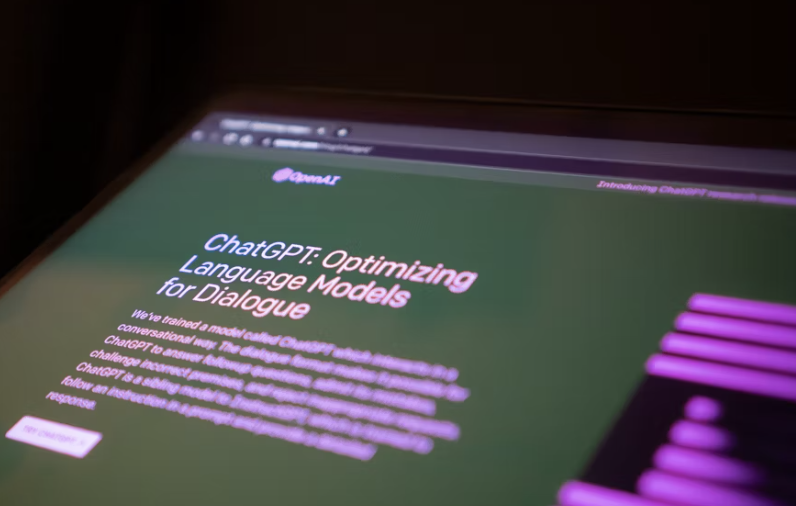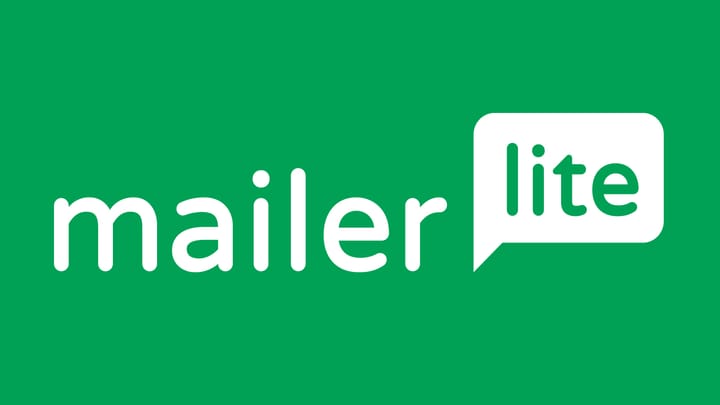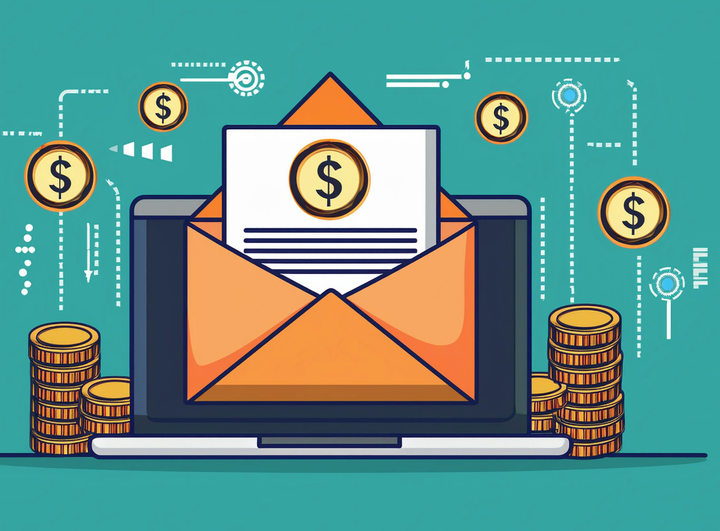ChatGPT for Email Marketing: 5 Prompts That Boost Open Rates
We're going to show you exactly how to do this with five prompts that have been shown to always increase open rates. No fluff or complicated theories. Just useful tips you can use right away.

Imagine this: You spend hours making the perfect email campaign, choosing beautiful pictures (which is hard, by the way), writing interesting copy, and setting up your automation sequences. You send your latest work of art to your 10,000 subscribers, feeling good about it.
Then the truth hits.
Your open rate is only 12%, which is NOT good. Does this sound familiar? Well, we know.
This is a problem that most email marketers deal with every day. But here's the thing: 64% of people decide whether or not to open an email based only on the subject line. If you get those few words at the top right, you've already won half the battle.
So, Say hello to ChatGPT.
You can do more with this AI tool than just write essays or answer random questions. It becomes your secret weapon for making subject lines that people really want to click when you know how to use it right.
But here's what most people don't get: People ask ChatGPT vague questions like "write me some email subject lines" and then wonder why the answers are boring and generic. When you give ChatGPT specific, strategic prompts that play on human psychology, that's when the magic happens.
We're going to show you exactly how to do this with five prompts that have been shown to always increase open rates. No fluff or complicated theories. Just useful tips you can use right away. (wink, wink!)
Why ChatGPT is a Good Tool for Email Marketing
Before we get into the prompts, let's talk about why ChatGPT is a real tool for email marketing and not just a pretty face.
Speed and Size: It takes time to write effective subject lines. You could spend 30 minutes coming up with ten ideas and then another hour testing and improving them. In 30 seconds, ChatGPT can come up with 10 excellent choices.
That's not being lazy; that's being efficient.
Psychology Knowledge: ChatGPT has read thousands of marketing books, studies, and successful campaigns. It knows what makes people tick in their minds, which is exactly what you need for interesting subject lines.
Many different versions: Are you stuck in a creative rut? ChatGPT always has new ideas. It can make hundreds of different versions, which can help you get out of the same old patterns you might be stuck in.
Cost-Effective: A good copywriter charges $75 to $150 per hour. You can get ChatGPT for about $20 a month. Do the math.
But what's the difference? You need to know how to talk to it the right way. Generic prompts give you generic answers. Strategic prompts lead to big changes in the game.

The Foundation: How to Craft Prompts That Actually Work
Most people treat ChatGPT like Google; they type in what they want and hope for the best. However, ChatGPT functions more like a highly intelligent employee. The clearer your instructions, the better the output.
Every effective ChatGPT prompt needs three things:
1. A Clear Goal: Don't just say "write subject lines." Say, "write subject lines that increase open rates for busy executives who need quick solutions."
2. Specific Context: Include details about your audience, product, brand voice, and what you're trying to achieve. The more context, the better the results.
3. A Defined Role: Tell ChatGPT to act as a specific type of expert. "Act as an email marketing specialist with 10 years of experience" gets much better results than no role at all.
Think of it like briefing a freelancer. The more specific and detailed your brief is, the more closely their work will align with your expectations.
The 5 Game-Changing ChatGPT Prompts
Prompt 1: The Advanced Curiosity Gap Generator
Here's what you'll copy and paste into ChatGPT:
"Act as an expert email marketer with 10+ years of experience. Create 10 subject lines for [specific product/service] targeting [specific audience] that create curiosity gaps without being clickbait. The subject lines should hint at valuable, specific information but leave readers wanting to know more. Match our brand voice: [describe your brand tone—e.g., professional yet approachable, witty, authoritative]. Include variations for A/B testing with different curiosity triggers."
Why This Works: It's in our nature to fill in gaps in information. When we know a little bit about something but not everything, our brains make us want to learn more. This is the same psychological principle that makes cliffhangers work so well on TV.
Example in the Real World: You might get "The productivity secret that busy CEOs don't want you to know" or "Why your competitors are quietly switching to this tool" instead of "New Product Launch."
The Psychology: Be very clear. Instead of "fitness app," say "meal planning app for busy working parents who want to lose weight without having to follow a complicated diet."
Prompt 2: The Strategic Pain Point Identifier
Copy this into ChatGPT:
"You're a customer psychology expert specializing in [your industry]. Based on [detailed customer segment/demographic with specific characteristics], identify their top 3 most pressing pain points and create 8 subject lines that address these problems with appropriate urgency. Avoid overused phrases and maintain our brand voice: [brand voice description]. Include both direct and indirect pain point approaches for testing."
Why This Works: People don't buy products. They buy solutions to problems. When your subject line immediately identifies with someone's specific struggle, they think, "Finally, someone who gets it," and click to learn more.
Real Example: For a project management tool targeting small business owners, you might get "Stop losing clients because of missed deadlines" or "The real reason your team keeps dropping the ball (and how to fix it)."
The Psychology: Pain is a stronger motivator than pleasure. We'll work twice as hard to avoid losing $100 as we will to gain $100. Subject lines that address pain points tap into this fundamental human drive.
Prompt 3: The Authentic FOMO Creator
Here's your prompt:
"As an ethical marketing specialist, write 10 subject lines that create genuine urgency for [specific offer/event/deadline] without using overused phrases like 'last chance' or 'limited time.' Focus on value-driven urgency that matches our brand personality: [brand description]. Include specific deadline references and create variations with different scarcity angles (time, quantity, access) for comprehensive A/B testing."
Why This Works: FOMO (Fear of Missing Out) is real and powerful. Studies show that 60% of millennials make impulse purchases within 24 hours when they fear missing out.
But here's the crucial part, it has to be genuine. Fake urgency backfires and destroys trust.
Real Example: Instead of "Last chance!" you might get "Early bird pricing ends Thursday at midnight" or "Only 47 spots left in the January cohort."
The Trust Factor: Notice how the prompt specifically asks for "authentic" urgency and "ethical" marketing. This isn't about tricking people – it's about communicating real deadlines and limited availability in compelling ways.
Prompt 4: The Strategic Social Proof Amplifier
Use this prompt:
"You're a conversion psychology expert. Create 10 subject lines that incorporate authentic social proof elements like [specific customer success metrics, testimonials, or popularity indicators] for [product/service] targeting [audience]. Present social validation naturally without appearing boastful, maintaining our [brand voice]. Include variations using different types of social proof (numbers, testimonials, authority, popularity) for testing purposes."
Why This Works: We're social creatures. When we see other people doing something, our brain interprets it as safe and desirable. It's why restaurants put fake lines outside and why "best-seller" badges work so well.
Real Example: "How 2,847 small business owners increased revenue by 34%" or "The strategy that helped Sarah go from $0 to $10K/month."
Different Types of Social Proof:
- Numbers (user counts, success rates)
- Testimonials (customer quotes)
- Authority (expert endorsements)
- Popularity (trending, most-used)
Prompt 5: The Value-Driven Benefit Teaser
Your final prompt:
"Acting as a direct response copywriter, generate 10 subject lines that clearly communicate the primary benefit readers will receive from opening this email about [specific topic/offer]. Use power words that trigger positive emotions while matching our brand voice: [brand description]. Focus on [specific benefit category—time-saving, money-saving, skill-building, etc.] and create variations with different emotional triggers and benefit angles for A/B testing."
Why This Works: At the end of the day, people want to know, "What's in it for me?" This prompt forces you to lead with value and makes the benefit crystal clear from the subject line alone.
Real Example: "Save 5 hours per week with this simple email template" or "The 10-minute morning routine that doubled my productivity."
Power Words That Work: Save, gain, discover, secret, proven, guaranteed, instant, simple, effective, and powerful. But use them naturally, not stuffed in artificially.
How to Actually Use These Prompts (Step by Step)
Step 1: Pick one prompt to start with. Don't try all five at once.
Step 2: Fill in all the bracketed information with specific details about your business, audience, and goals.
Step 3: Run the prompt and review the results. You'll probably get 3-4 winners and 6-7 that need work.
Step 4: Take the best results and ask ChatGPT to create variations: "Make 5 variations of option #3, but make them shorter," or "Create 3 versions of option #7 that are more casual in tone."
Step 5: Test them! Set up A/B tests with your email platform and track open rates.
Step 6: Double down on what works and iterate on what doesn't.
A/B Testing Your AI-Generated Subject Lines
Creating great subject lines is only half the battle. You need to test them to know what actually works with your specific audience.
Basic Testing Setup: Most email platforms let you test 2-4 subject lines at once. Start small: test 2 variations on a small segment of your list (maybe 20%), then send the winner to the remaining 80%.
What to Track:
- Open rates (obviously)
- Click-through rates (opens don't matter if people don't take action.)
- Unsubscribe rates (high unsubscribe rates might mean your subject line was misleading)
Sample Size Matters: You need at least 100 opens per variation to get meaningful data. If your list is smaller, test over multiple campaigns instead of trying to get statistical significance from one send.
Time Your Tests: Send times matter. Tuesday-Thursday between 10 AM-2 PM typically perform best, but your audience might be different. Test this too.
Common Mistakes to Avoid
Mistake #1: Being Too Vague in Your Prompts
Bad: "Write email subject lines for my business."
Good: "Write subject lines for a meal prep service targeting busy working parents who want healthy family dinners but have less than 30 minutes to cook"
Mistake #2: Not Including Your Brand Voice If your brand is friendly and casual, don't let ChatGPT write formal, corporate-sounding subject lines. Always specify your tone.
Mistake #3: Using Every Suggestion ChatGPT will give you 10 options. Maybe 3 will be great, 4 will be decent, and 3 will be terrible. Use your judgment.
Mistake #4: Not Testing Your gut feeling about which subject line is best is probably wrong. Test everything.
Mistake #5: Misleading Subject Lines Never use a subject line that doesn't match your email content. You'll get opens, but you'll also get unsubscribes and complaints.

Making It Work for Your Industry
These prompts work across industries, but you'll need to adjust them:
E-commerce: Focus on benefits, savings, and social proof. "How 1,000+ customers saved 40% on their grocery bills"
B2B Software: Lead with pain points and efficiency gains. "Stop losing deals because your CRM can't keep up."
Education/Courses: Use curiosity gaps and transformation stories. "The skill that got me promoted (in just 6 weeks)"
Health/Fitness: Combine social proof with specific outcomes. "How Lisa lost 23 pounds without giving up pizza"
Financial Services: Focus on security and proven results. "The investment strategy that weathered 3 market crashes"
The Bottom Line
ChatGPT isn't magic, but it's a powerful tool when used strategically. The difference between getting generic results and game-changing results comes down to how you prompt it.
Start with one of these five prompts today. Fill in the specific details about your business and audience. Generate 10 subject lines. Test them against your current approach.
I guarantee you'll see an improvement in your open rates within the first month. More importantly, you'll have a systematic approach for creating compelling subject lines that you can use forever.
The inbox is crowded, but with the right subject lines, your emails will be the ones people actually want to open.
Remember: The best subject line in the world won't save a bad email, but a bad subject line will kill a great one.
Master these prompts, and you'll never struggle with email open rates again.



